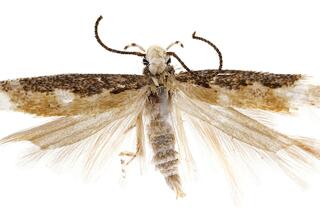Entertaining Look at Name Game
- Share via
“What to name the baby?” That question has challenged parents of all ethnic groups down through the ages. Genealogists are just as fascinated with names--surnames, given names and place names--as are scholars in onomastics and etymology. Not only do we want to know the names of our ancestors--given and surnames--but whether a town in Ohio or England was named for one of our relatives.
Leonard R. N. Ashley, a professor of English at Brooklyn College of the City University of New York, relates in his new book, “What’s in a Name?” (Genealogical Publishing Co.), stories about all types of names--forenames, nicknames, titles, surnames and place names in the United States and the world; names of things; names in literature and business, and naming patterns of everything from rocks to pets.
Ashley also provides tips for what he considers good names for children. Genealogists may argue with his opinions. However, his delightful book is filled with examples that entertain and get you thinking about all names--in new ways.
Parents with the surname of Green named their children: Holly, Kelly, Forest and Leif. Cute? Ashley doesn’t think so. He explores in depth the wild, wonderful world of naming patterns, and the prevailing conventions and trends that have all been a part of our forenaming traditions.
Some genealogists will quibble with his tips for giving a child a good first name: He maintains parents should not limit their choices by slavishly deferring to family tradition. On the other hand, his recommendation that parents should not bestow “cute names” is valid. Names that seem clever or cute for an infant often become an embarrassment to that person in later years. Cute names are for pets, according to Ashley, not for people.
“When a Wind family named their kids ‘North, East, South and West,’ they blew it,” he writes.
Parents often make inadvertent mistakes: Peter Moss may later become Pete Moss. Ashley advises parents to use their wits to see to it that there is no conceivable way the name(s) you give will hurt the bearer. Good advice. Many of us carry the scars of childhood taunts about our given or surnames.
However, he is against naming a baby after one of its great relatives, or an illustrious person--a point on which genealogists may disagree with him.
His advice about giving baby girls a “datable” name--a currently popular name that will be out of vogue in 25 years--is cogent. Parents who have named daughters, Jessica, Jennifer or Stephanie have stamped a birth date of about 1980-85 upon them.
Ashley advises avoiding naming girls what he calls “harsh-sounding” (Hilda and Zelda), “ditsy ones” (Bambi, Brandy), unfashionable flower names (Pansy, Violet, Myrtle), coldly classical names (Phoebe, Phyllis, Cassandra), and old-fashioned names (Mildred, Maude, Matilda).
His book also is crammed with hundreds of delightful stories about place names.
Did you know Juneau, Alaska, was named for an eccentric prospector? And in Missouri we nearly had two places named Excelsior. But when the inhabitants of the second would-be Excelsior learned of the first, they decided they needed something distinctive--so they called their town Peculiar.
“What’s in a name?” contains many sources to guide you in tracking down place name origins to help you learn why and how many towns, cities and states were named. You name it--anything you want to know about names is in this entertaining, enlightening book.
More to Read
Sign up for our Book Club newsletter
Get the latest news, events and more from the Los Angeles Times Book Club, and help us get L.A. reading and talking.
You may occasionally receive promotional content from the Los Angeles Times.







